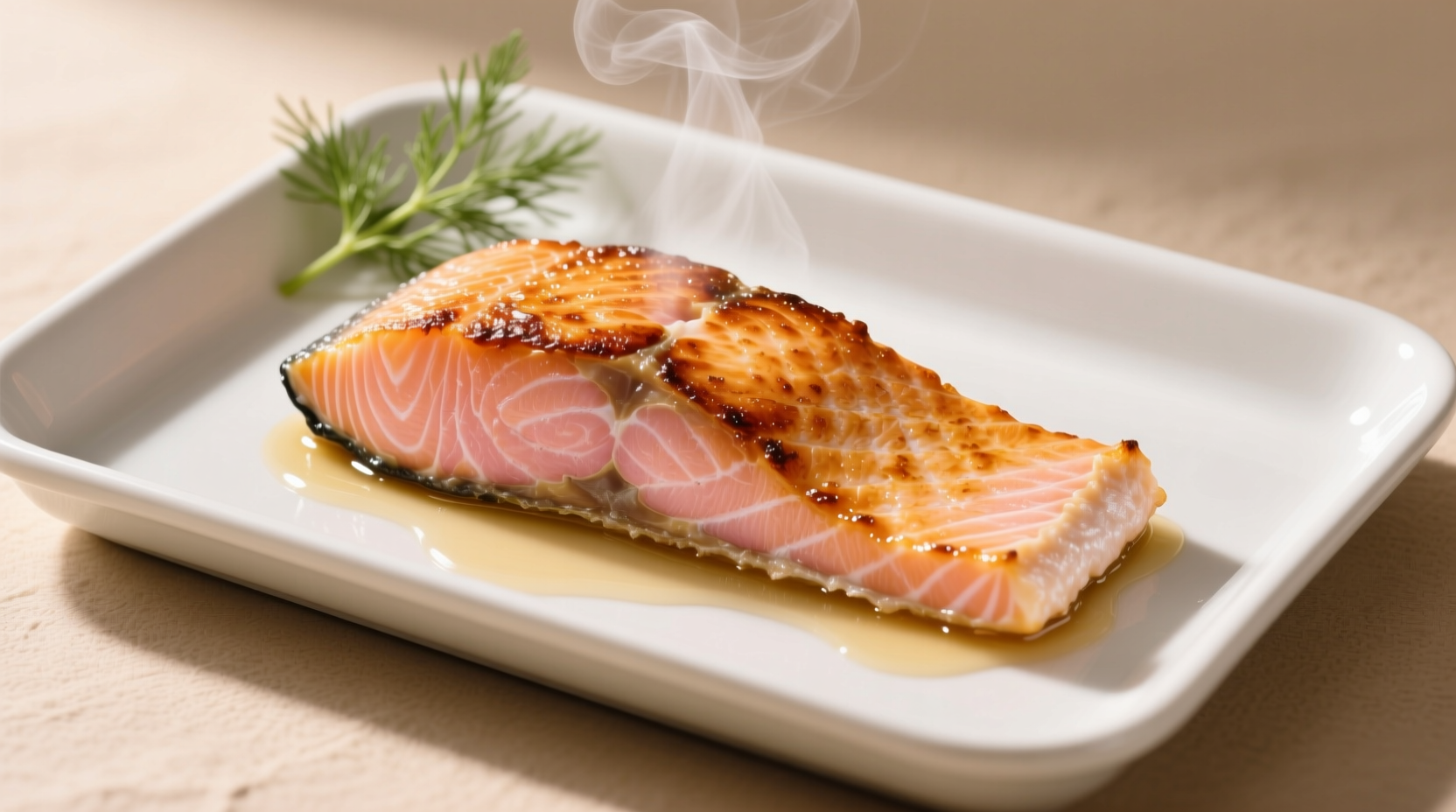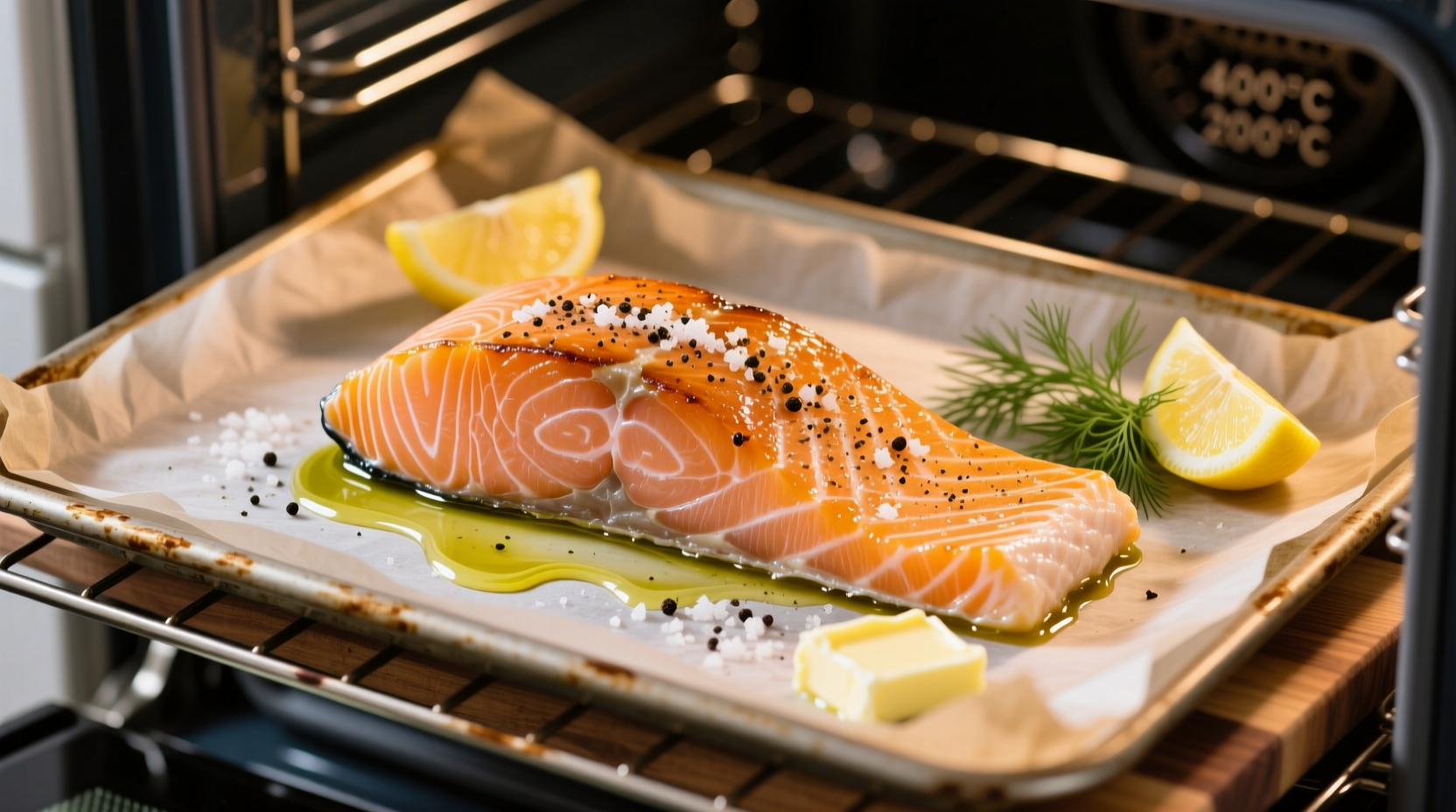Salmon needs 12-15 minutes to cook perfectly in a 400°F oven. This timing applies to standard 1-inch thick fillets, and the fish is done when it reaches an internal temperature of 145°F (63°C). Thinner cuts may require as little as 10 minutes, while thicker portions could need up to 18 minutes.
Getting salmon perfectly cooked in the oven can transform your weeknight dinner from ordinary to extraordinary. Many home cooks struggle with timing, resulting in either dry, overcooked fish or unsafe undercooked portions. This guide delivers precise timing instructions based on scientific temperature principles and professional chef techniques—no guesswork required.
The Science Behind Perfect Oven-Baked Salmon
Understanding why 400°F works best for salmon reveals why precise timing matters. At this temperature, the oven creates the ideal environment for salmon's delicate proteins to cook evenly without drying out. The high heat quickly sears the surface while gently cooking the interior, preserving moisture and flavor.
Food safety experts at the USDA recommend cooking fish to an internal temperature of 145°F (63°C), measured at the thickest part. This temperature ensures harmful bacteria are eliminated while maintaining optimal texture. Lower temperatures risk foodborne illness, while higher temperatures cause the fish to become dry and tough.
Factors That Change Your Cooking Time
While 12-15 minutes works for most standard fillets, several variables affect exact timing. Recognizing these factors helps you adapt the cooking process to your specific situation:
| Salmon Thickness | Recommended Cooking Time | Visual Doneness Indicators |
|---|---|---|
| 1/2 inch (1.25 cm) | 8-10 minutes | Firm to touch, flakes easily |
| 3/4 inch (2 cm) | 10-12 minutes | Slightly translucent center when checked |
| 1 inch (2.5 cm) | 12-15 minutes | Opaque throughout, separates into flakes |
| 1 1/4 inches (3 cm) | 15-18 minutes | Firm but still moist center |
This cooking time chart reflects research from the FDA's Safe Minimum Cooking Temperatures guidelines, which emphasize that thickness significantly impacts required cooking duration. Professional kitchens use this same thickness-based timing approach to ensure consistent results.
Your Step-by-Step Cooking Process
Follow these steps for perfectly cooked salmon every time:
- Preheat your oven to 400°F at least 15 minutes before cooking. Oven thermometers show many home ovens run 25-50°F cooler than displayed, so proper preheating is essential.
- Prepare your salmon by patting it completely dry with paper towels. Moisture creates steam that prevents proper searing.
- Season simply with salt, pepper, and optional lemon slices or herbs. Avoid sugary marinades that burn at high temperatures.
- Place salmon skin-side down on a parchment-lined baking sheet. The skin protects the delicate flesh during cooking.
- Roast for 12-15 minutes for 1-inch thick fillets, checking temperature at the 12-minute mark.
- Remove when internal temperature reaches 145°F, or when the salmon flakes easily with a fork but still appears slightly translucent in the center.

How to Check for Perfect Doneness Without a Thermometer
While a food thermometer provides the most accurate results, these visual and tactile indicators help when you don't have one:
- Flake test: Gently press the thickest part with a fork. Properly cooked salmon separates into distinct flakes but remains moist.
- Color change: Raw salmon is deep orange-red; cooked salmon turns opaque pink throughout.
- Texture: The fish should feel firm but still slightly springy when pressed, not hard or mushy.
Food science research from the University of California's Agriculture and Natural Resources department confirms that salmon continues cooking for 3-5 minutes after removal from the oven due to residual heat. This carryover cooking means you should remove salmon when it's just slightly underdone for perfect results.
Avoid These Common Cooking Mistakes
Even with perfect timing, these errors can ruin your salmon:
- Skipping the dry step: Moisture prevents proper browning and creates steam that overcooks the fish
- Crowding the pan: Overlapping fillets create uneven cooking and prevent proper air circulation
- Over-flipping: Turning salmon multiple times breaks the delicate flesh; flip only once if desired
- Using high-sugar glazes: Sugars burn quickly at 400°F, creating bitter flavors
Serving Suggestions for Perfect Results
Rest your salmon for 3-5 minutes after cooking to allow juices to redistribute. Pair with simple sides that complement rather than overwhelm the delicate flavor:
- Lemon-dill quinoa with roasted asparagus
- Garlic sautéed spinach and wild rice
- Herbed roasted potatoes with steamed green beans
For meal prep enthusiasts, properly cooked salmon stores well in the refrigerator for up to three days. The Academy of Nutrition and Dietetics confirms that reheating salmon gently in the oven at 275°F preserves texture better than microwave reheating, which often dries out the fish.











 浙公网安备
33010002000092号
浙公网安备
33010002000092号 浙B2-20120091-4
浙B2-20120091-4